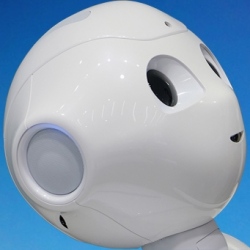
Machine learning and AI systems have significantly advanced in recent years. However, they are limited to executing only tasks they are specifically designed to perform and are unable to adapt when encountering situations outside their programming or training.
DARPA’s Lifelong Learning Machines (L2M) program, drawing inspiration from biological systems, seeks to develop fundamentally new ML approaches that allow systems to adapt continually to new circumstances without forgetting previous learning.
Above- Today’s machine learning and AI systems are limited to executing only tasks they are specifically programmed to perform, without being able to adapt to new situations outside of their training. DARPA’s L2M program aims to generate new methodologies that will allow these systems to learn and improve during tasks, apply previous skills and knowledge to new situations, incorporate innate system limits, and enhance safety in automated assignments.
The L2M research teams are now focusing their diverse expertise on understanding how a computational system can adapt to new circumstances in real time and without losing its previous knowledge. One group, the team at University of California, Irvine plans to study the dual memory architecture of the hippocampus and cortex. The team seeks to create an ML system capable of predicting potential outcomes by comparing inputs to existing memories, which should allow the system to become more adaptable while retaining previous learnings.
The Tufts University team is examining a regeneration mechanism observed in animals like salamanders to create flexible robots that are capable of altering their structure and function on the fly to adapt to changes in their environment. Adapting methods from biological memory reconsolidation, a team from University of Wyoming will work on developing a computational system that uses context to identify appropriate modular memories that can be reassembled with new sensory input to rapidly form behaviors to suit novel circumstances.
“With the L2M program, we are not looking for incremental improvements in state-of-the-art AI and neural networks, but rather paradigm-changing approaches to machine learning that will enable systems to continuously improve based on experience,” said Dr. Hava Siegelmann, the program manager leading L2M. “Teams selected to take on this novel research are comprised of a cross-section of some of the world’s top researchers in a variety of scientific disciplines, and their approaches are equally diverse.”
While still in its early stages, the L2M program has already seen results from a team led by Dr. Hod Lipson at Columbia University’s Engineering School. Dr. Lipson and his team recently identified and solved challenges associated with building and training a self-reproducing neural network, publishing their findings in Arvix Sanity. While neural networks are trainable to produce almost any kind of pattern, training a network to reproduce its own structure is paradoxically difficult.
As the network learns, it changes, and therefore the goal continuously shifts. The continued efforts of the team will focus on developing a system that can adapt and improve by using knowledge of its own structure. “The research team’s work with self-replicating neural networks is just one of many possible approaches that will lead to breakthroughs in lifelong learning,” said Siegelmann.
“We are on the threshold of a major jump in AI technology,” stated Siegelmann. “The L2M program will require significantly more ingenuity and effort than incremental changes to current systems. L2M seeks to enable AI systems to learn from experience and become smarter, safer, and more reliable than existing AI.”
